In today’s fast-paced culinary landscape, the demand for innovative cooking appliances has surged, with contact grills emerging as a favorite among chefs and home cooks alike. These versatile cooking devices offer a unique grilling experience that perfectly seals in flavors and locks in juices. As the market for contact grills continues to grow, Original Equipment Manufacturers (OEMs) play a pivotal role in shaping the industry’s direction. This article delves into the intricacies of contact grill OEMs, their processes, the benefits of partnering with them, and the future trends that are set to redefine the market landscape.
Introduction to Contact Grill OEMs
Contact Grill OEMs, or Original Equipment Manufacturers, play a pivotal role in the appliance industry, particularly in the realm of outdoor cooking. These specialized companies are known for their expertise in designing, developing, and manufacturing contact grills that are then sold under various brand names. In this detailed exploration, we’ll delve into what contact grills are, how OEMs contribute to their production, and the significance of their role in the market.
Contact grills, often referred to as countertop grills or panini presses, are compact cooking appliances designed for use in homes and outdoor settings. They feature a flat surface that allows for even cooking of foods like sandwiches, burgers, and vegetables. The heat is applied from above and below, ensuring that the food is grilled to perfection with minimal mess and effort. This convenience has made contact grills a popular choice for individuals seeking a quick and easy way to prepare delicious meals.
The role of an OEM in the contact grill market is multifaceted. They are responsible for the design and engineering of the grill’s components, ensuring that they meet the required specifications and quality standards. This includes the development of the heating elements, the construction of the grill plates, and the integration of safety features. By focusing on these aspects, OEMs enable the brand manufacturers to deliver a product that is both efficient and user-friendly.
One of the primary benefits of working with a contact grill OEM is the access to a wealth of experience and specialized knowledge. These companies have honed their skills over years of manufacturing, and their expertise can be invaluable in creating a high-quality product. OEMs also have the ability to scale production quickly, which is crucial for meeting the fluctuating demands of the market.
When a brand decides to partner with a contact grill OEM, they can expect a streamlined process that begins with the initial consultation. During this phase, the OEM will work closely with the brand to understand their specific needs and goals. This might involve tailoring the design to fit certain aesthetic preferences or enhancing functionality to meet specific cooking requirements.
One of the key considerations for brands when selecting an OEM is the quality of the materials used. Contact grills are subjected to high temperatures and frequent use, so it’s essential that the materials are durable and resistant to wear. OEMs that prioritize the use of high-quality stainless steel, heat-resistant plastics, and other robust materials ensure that the final product is built to last.
Another important factor is the OEM’s ability to customize the product. Brands often have unique selling points that they want to highlight, whether it’s through innovative features or a distinctive design. A reliable OEM can provide the flexibility to incorporate these elements without compromising on performance or safety.
Case studies of successful collaborations between contact grill OEMs and brand manufacturers are numerous. For instance, a well-known outdoor cooking brand may have partnered with an OEM to develop a contact grill that incorporates advanced heating technology, allowing for faster cooking times and more precise temperature control. The result was a product that stood out in a crowded market and satisfied the needs of consumers looking for the latest in cooking technology.
As the market evolves, so too does the role of contact grill OEMs. Innovations such as smart grills that can be controlled via smartphone apps or grills with adjustable heat settings are becoming more common. These advancements are driven by the continuous research and development efforts of OEMs, who are always looking for ways to improve their products and stay ahead of the competition.
In conclusion, contact grill OEMs are instrumental in shaping the landscape of the outdoor cooking appliance industry. Their expertise in design, engineering, and production ensures that brands can offer consumers high-quality, reliable products. As the market continues to grow and consumer expectations evolve, the role of these OEMs will only become more crucial in delivering cutting-edge cooking solutions.
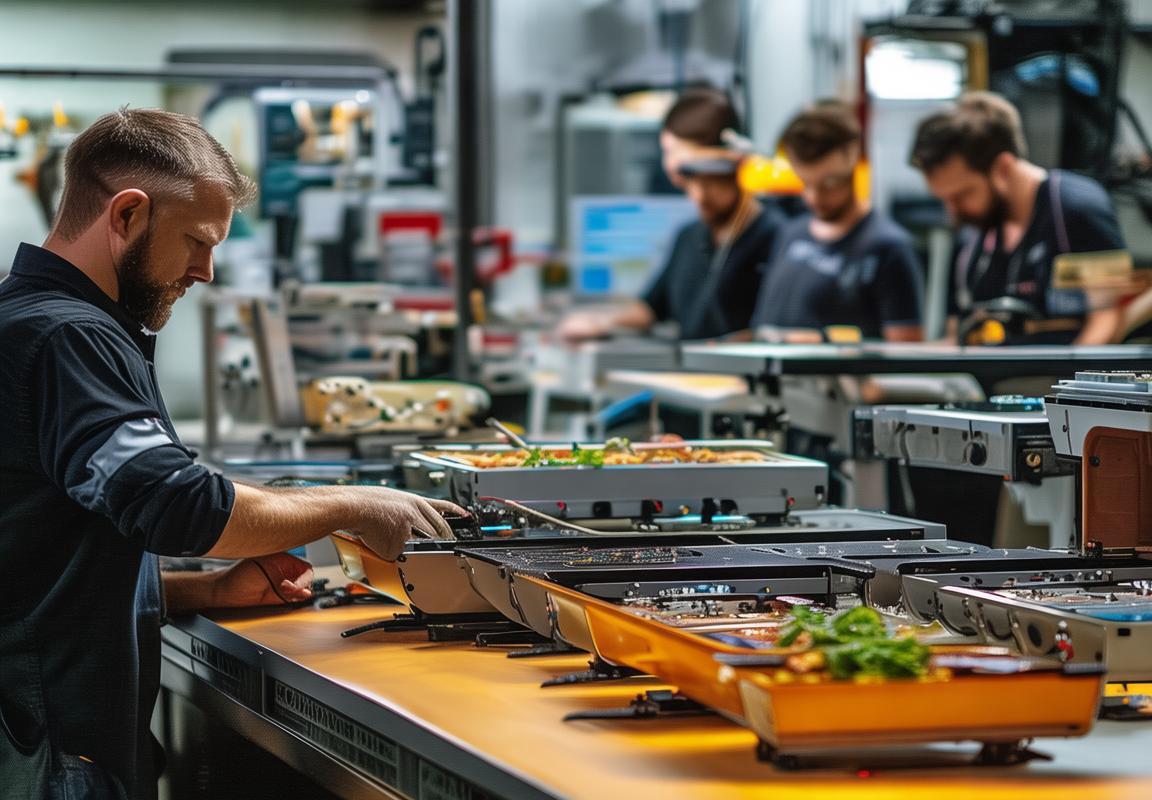
Understanding Contact Grills: What They Are and How They Work
Contact grills, often overshadowed by their sleek and efficient counterparts like gas grills or charcoal grills, have been making waves in the culinary world for their unique cooking capabilities. These compact appliances are designed to provide a high-heat, even cooking surface that locks in flavors and ensures perfectly grilled foods.
The concept of a contact grill is simple yet innovative. Unlike traditional grills that rely on direct heat from above and below, contact grills utilize a flat, heated surface that sandwiches the food in between. This design not only allows for even cooking but also seals in the juices, resulting in a tender and juicy outcome. At the heart of the contact grill is its primary component: the grill plate.
The grill plate is made from a durable and heat-resistant material, often stainless steel, which can withstand the high temperatures needed for grilling. The surface of the grill plate is typically smooth, with a series of shallow grooves or grids to help channel fats and oils away from the food. This not only keeps the grill plate clean but also prevents flare-ups, which can burn and impart an unwanted taste to your food.
When cooking on a contact grill, the process is straightforward. You place the food on the grill plate, close the lid, and let the heat do its work. The sealed environment creates a pressurized cooking environment that accelerates the cooking process. The heat from the grill plate can reach temperatures upwards of 500°F (260°C), which is hot enough to sear the exterior of the food while cooking the interior to perfection.
One of the standout features of contact grills is their ability to cook a variety of foods. Whether you’re grilling steaks, burgers, sandwiches, or even vegetables, the even distribution of heat ensures that every piece of food is cooked uniformly. This is particularly beneficial for delicate foods like fish or thin cuts of meat, as the risk of burning is significantly reduced.
The contact grill’s ability to cook at such high temperatures also means that it can mimic the texture of a traditional grill without the need for an open flame. The searing effect is achieved by the direct heat of the grill plate, which browns and caramelizes the food’s surface, locking in flavors and giving it that characteristic grill mark.
The grill plate is not the only part of the contact grill that plays a crucial role in the cooking process. The lid of the grill is equally important. It not only serves to trap heat but also to act as a barrier to prevent smoke from escaping. This creates an enclosed cooking environment that is perfect for slow-cooking meats or for using additional elements like a pan to cook sides or sauces.
In terms of functionality, contact grills often come with additional features that enhance the cooking experience. Some models have adjustable temperature controls, allowing users to fine-tune the heat to suit the food they are cooking. Others may include a drip tray to collect excess fats and juices, making for easier cleanup. Some even have built-in timers or digital displays to provide precise cooking times and temperatures.
Another advantage of contact grills is their portability. Many models are designed with compact dimensions and lightweight construction, making them easy to store and transport. This makes them a great choice for those with limited space, such as apartment dwellers, or for those who enjoy outdoor cooking but don’t want to be tied down by a larger grill.
While contact grills may not offer the same visual spectacle as a traditional grill with flames and smoke, they more than compensate with their efficiency, ease of use, and consistent results. Whether you’re a seasoned grill master or a novice cook looking to add some flair to your meals, understanding how a contact grill works can open up a world of possibilities in the kitchen.
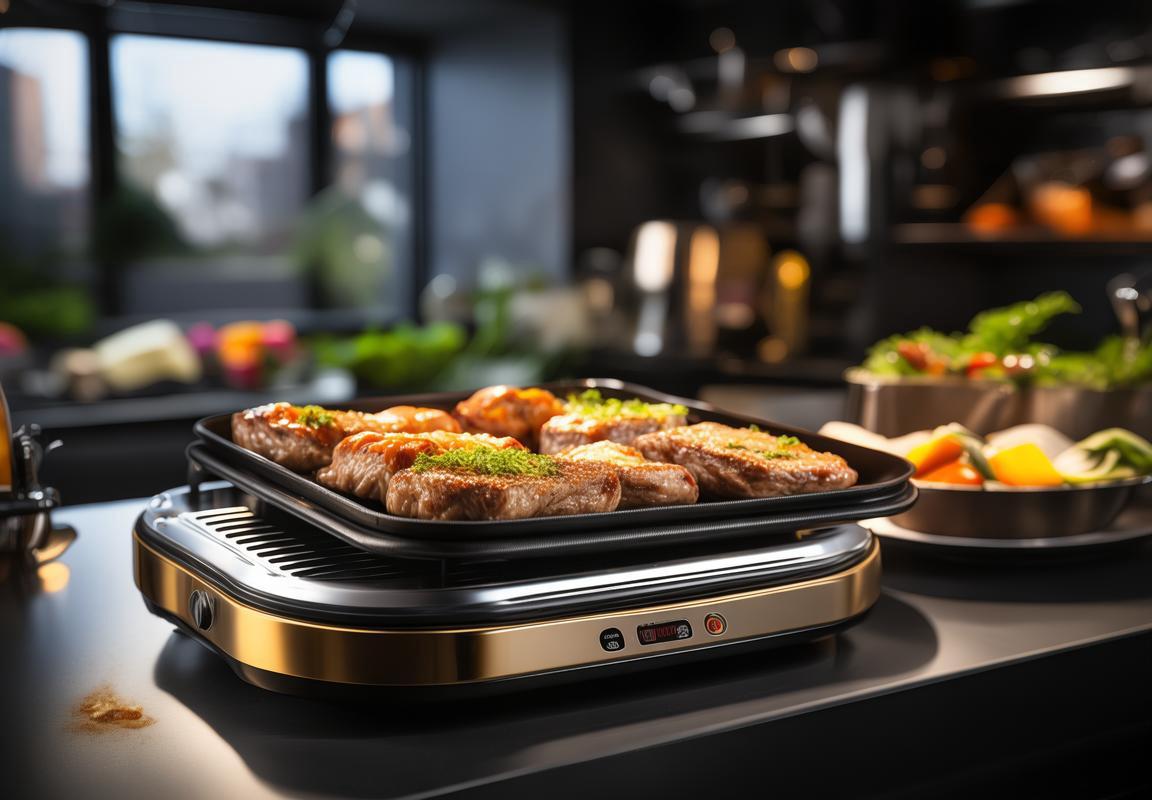
The Importance of OEMs in the Contact Grill Industry
In the realm of cooking appliances, the role of Original Equipment Manufacturers (OEMs) in the contact grill industry is pivotal. These specialized companies play a critical part in shaping the market landscape, offering a myriad of benefits that extend beyond the production line. Here’s an exploration of why OEMs are so integral to the contact grill industry.
OEMs are the backbone of innovation. They often have the technical expertise and resources to push the boundaries of what’s possible in the design and functionality of contact grills. By investing in research and development, OEMs can introduce new features, materials, and technologies that can significantly enhance the user experience. This constant evolution keeps the market fresh and competitive, ensuring that consumers have access to the latest advancements in grilling technology.
Customization is another key aspect where OEMs excel. Many businesses, whether they are established brands or startups, seek to differentiate their products in a crowded marketplace. OEMs can work closely with these clients to create customized contact grills that meet specific requirements. This could mean tailoring the size, design, or even the cooking surface to fit the brand’s identity or the target market’s preferences. This level of personalization is something that many brands might not be able to achieve on their own.
Quality control is non-negotiable in the cooking appliance industry, and OEMs are instrumental in maintaining high standards. They have the systems in place to ensure that every contact grill that leaves their facility meets rigorous quality checks. This includes everything from the materials used to the assembly process and the final product testing. By outsourcing manufacturing to an OEM, brands can be confident that their products will stand up to the demands of the market and the expectations of their customers.
The cost-effectiveness of working with an OEM is a significant draw for many businesses. Manufacturing can be a costly venture, especially for small to medium-sized enterprises. By partnering with an OEM, companies can leverage the economies of scale that these manufacturers enjoy. This often means lower production costs, which can translate into more competitive pricing for the end consumer. Additionally, OEMs can manage the supply chain more efficiently, reducing the risk of stockouts and minimizing waste.
Flexibility is a hallmark of OEM relationships. The contact grill market is dynamic, with trends and consumer demands shifting rapidly. OEMs are able to adapt to these changes quickly, whether it’s scaling up production to meet a surge in demand or modifying products to address new safety regulations. This agility allows brands to stay relevant and responsive without the burden of managing complex manufacturing operations in-house.
Innovation isn’t just about creating new products; it’s also about enhancing existing ones. OEMs often work on improving the durability, efficiency, and user-friendliness of contact grills. For instance, they might develop more efficient heating elements, better heat distribution systems, or user interfaces that make grilling easier and more intuitive. These improvements can lead to increased customer satisfaction and loyalty.
OEMs also play a crucial role in the global supply chain. They can produce contact grills in different regions, taking advantage of local expertise and resources. This not only reduces transportation costs but also allows for faster delivery to international markets. For brands looking to expand their reach, this global presence of OEMs can be a game-changer.
Moreover, OEMs are adept at managing regulatory compliance. The cooking appliance industry is subject to various safety and environmental regulations that can be complex and costly to navigate. By working with an OEM, brands can ensure that their products meet all necessary standards without the need for extensive in-house knowledge or investment.
Finally, the partnership with an OEM can lead to strategic alliances and networking opportunities. These manufacturers often have a wide network of suppliers and partners, which can open doors to new technologies, materials, and market insights. For brands, this can be a valuable resource for staying ahead of the curve.
In summary, the importance of OEMs in the contact grill industry cannot be overstated. They are the architects of innovation, the enablers of customization, the guardians of quality, the drivers of cost-effectiveness, the adaptors to market changes, the innovators of user experience, the facilitators of global supply, the compliance experts, and the networking hubs. Without these specialized companies, the contact grill industry might not be able to achieve the level of excellence and diversity that it currently offers to consumers worldwide.
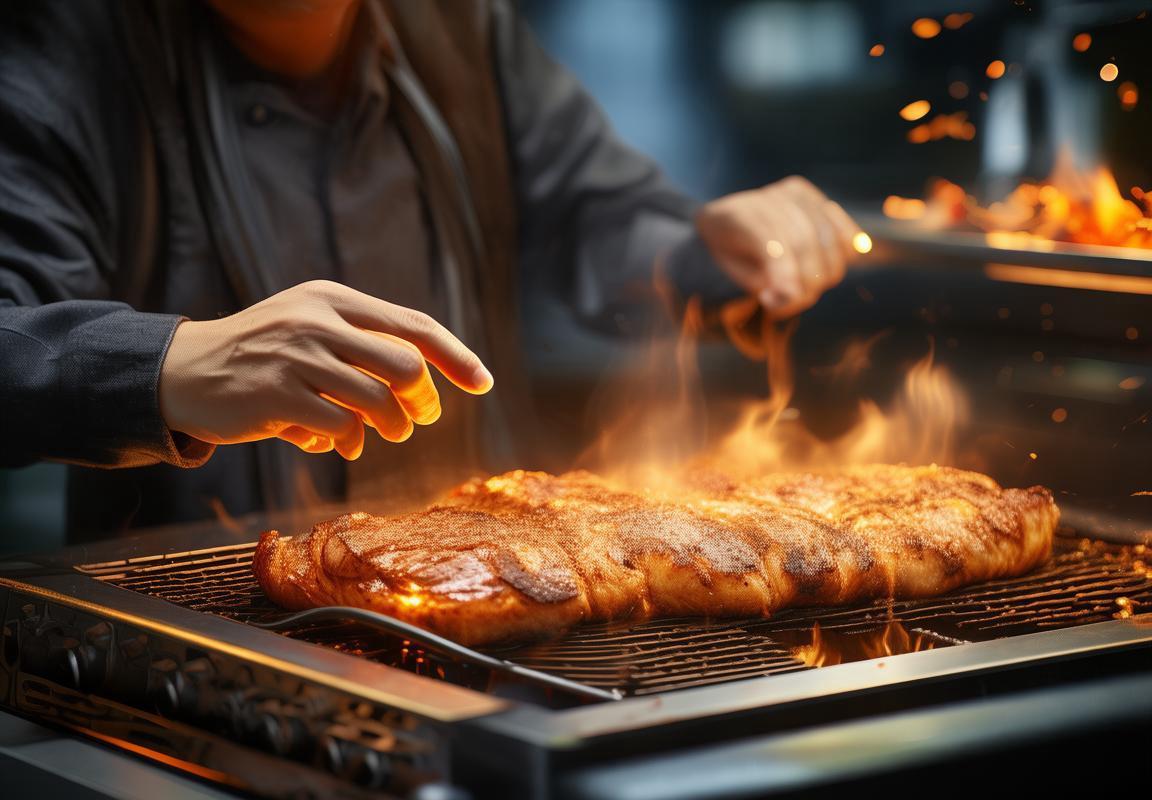
Benefits of Choosing a Contact Grill OEM
Choosing a Contact Grill OEM can offer a myriad of benefits that can significantly impact your business and the quality of the final product. Here’s an in-depth look at some of these advantages:
The Advantages of a Strong Manufacturer Relationship- By partnering with a Contact Grill OEM, you gain access to a team of experienced engineers and technicians who understand the nuances of contact grill design and production. This expertise can lead to a more refined and functional end product, as the OEM can tailor the grill to meet specific customer needs.
Customization and Innovation- OEMs often provide a level of customization that off-the-shelf products cannot match. They can integrate new technologies, adjust design elements, and offer proprietary features that set your product apart in the market. This level of innovation can attract more customers and command a premium price.
Cost-Effective Production- Many Contact Grill OEMs have established supply chains and production processes that are optimized for efficiency. This means you can produce high-quality grills at a lower cost per unit, increasing your profit margins and allowing for competitive pricing strategies.
Quality Control and Reliability- Working with an OEM ensures that your product undergoes rigorous quality control checks throughout the manufacturing process. From the raw materials to the finished product, the OEM can maintain a high standard of quality, which is crucial for building a reputation of reliability and customer satisfaction.
Scalability and Flexibility- As your business grows, you need a manufacturing partner that can scale up production to meet increasing demand. Contact Grill OEMs are typically equipped to handle large-scale orders while maintaining quality, offering the flexibility to expand your product line or modify existing designs as needed.
Regulatory Compliance- The foodservice industry is subject to stringent regulations, and ensuring compliance can be challenging. Contact Grill OEMs are well-versed in these regulations and can guarantee that your grills meet all safety standards and certifications, saving you time and potential legal issues.
Reduced Development Time- Developing a new product from scratch can be time-consuming and resource-intensive. By working with an OEM, you can significantly reduce the time it takes to bring a new contact grill to market. The OEM’s existing knowledge and resources can streamline the design, prototyping, and testing phases.
Enhanced Market Positioning- The quality and performance of your contact grill can be a major factor in your brand’s market positioning. A reputable OEM can help you deliver a product that stands out for its durability, efficiency, and functionality, which can improve your brand’s reputation and market share.
Global Reach and Distribution- If your goal is to distribute your contact grills internationally, an OEM with a global network can be invaluable. They can assist with navigating different market requirements, cultural preferences, and distribution channels, ensuring your product reaches a wider audience.
Sustainability and Environmental Responsibility- Many OEMs are committed to sustainable practices and can help you incorporate eco-friendly materials and manufacturing processes into your contact grill. This not only aligns with the values of environmentally conscious consumers but also can be a selling point for your product.
Long-Term Support and Collaboration- A partnership with a Contact Grill OEM doesn’t end with the manufacturing process. These companies often offer long-term support, including maintenance, repairs, and improvements. This ongoing collaboration can lead to continuous innovation and a lasting business relationship.
By choosing a Contact Grill OEM, businesses can capitalize on a range of benefits that span from the development stage to post-manufacturing support. From tailored product design and cost savings to regulatory compliance and global distribution, the right OEM can be a pivotal component in your company’s success.
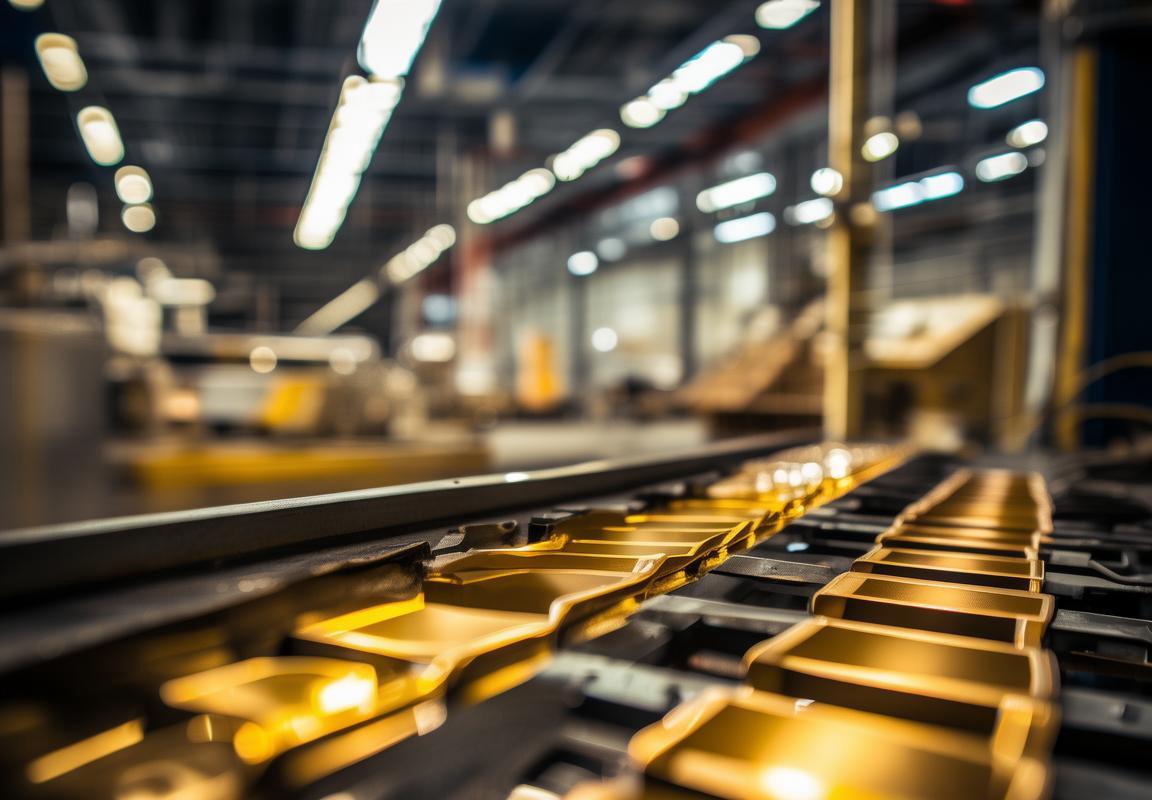
The Process of Partnering with a Contact Grill OEM
Navigating the partnership with a Contact Grill OEM involves several critical steps that can shape the success of your product. Here’s an in-depth look at the process:
Understanding the OEM’s CapabilitiesTo begin, it’s essential to thoroughly understand the capabilities of the OEM. This includes assessing their experience in manufacturing contact grills, their production capacity, and the quality of their previous products. A visit to their facility can provide insights into their operational efficiency and the standards they maintain.
Defining Your RequirementsBefore engaging with an OEM, clearly define your requirements. This includes the specifications of the contact grill, such as size, features, materials, and any unique selling points you wish to incorporate. Having a detailed list of your needs ensures that the OEM can provide a solution that aligns with your vision.
Initial Communication and ProposalOnce you have a clear idea of what you want, initiate communication with the OEM. This may involve sending a request for proposal (RFP) outlining your requirements. The OEM will then respond with a proposal that details their approach, timelines, costs, and any additional services they offer.
Negotiating Terms and ConditionsThe proposal stage is where negotiations come into play. You’ll need to discuss and negotiate the terms and conditions of the partnership, including pricing, delivery schedules, quality control measures, and intellectual property rights. It’s crucial to ensure that both parties are clear on their obligations and expectations.
Design and PrototypingOnce the terms are agreed upon, the OEM will move forward with the design phase. This involves creating a blueprint for the contact grill based on your specifications. Prototyping is a key step here, as it allows you to visualize and test the product before full-scale production. This stage may require several iterations to perfect the design.
Quality Assurance and TestingThroughout the production process, quality assurance is paramount. The OEM should have a robust quality control system in place to ensure that each contact grill meets the required standards. This includes material testing, functional testing, and safety checks. Regular updates on the progress and any issues encountered are crucial during this phase.
Production and SchedulingOnce the design is finalized and quality standards are confirmed, the OEM will begin production. This is where scheduling becomes critical. You’ll need to agree on production timelines, milestones, and delivery dates. Effective communication and regular updates are essential to manage expectations and address any potential delays.
Supply Chain ManagementA strong supply chain is vital for a smooth partnership. The OEM should be able to manage the supply of raw materials, components, and finished products efficiently. This includes maintaining inventory levels, coordinating with suppliers, and ensuring timely delivery of parts to the manufacturing line.
Pricing and Cost ManagementCost management is a continuous process throughout the partnership. The OEM should provide transparent pricing and cost breakdowns, including any additional expenses such as tooling, mold making, and shipping. Regular cost reviews and budget adjustments may be necessary to keep the project on track financially.
Intellectual Property and Legal ConsiderationsProtecting intellectual property is crucial. The OEM should have legal agreements in place to safeguard your designs and innovations. This includes non-disclosure agreements (NDAs), intellectual property rights, and clear terms regarding ownership and usage of the product.
Customer Support and After-Sales ServiceThe partnership doesn’t end with production. The OEM should offer customer support and after-sales service to ensure that your customers are satisfied with their purchase. This includes handling warranty claims, providing technical assistance, and addressing any product issues that may arise post-production.
Regular Reviews and FeedbackTo maintain a successful partnership, regular reviews and feedback sessions are essential. This allows both parties to discuss the progress, address any concerns, and make necessary adjustments. Open communication channels and a willingness to adapt to changes are key to long-term success.
Building a Strong RelationshipFinally, the partnership with a Contact Grill OEM is not just about the product; it’s about building a strong, collaborative relationship. This involves mutual respect, trust, and a shared commitment to delivering a high-quality product that meets your brand’s standards and customer expectations.
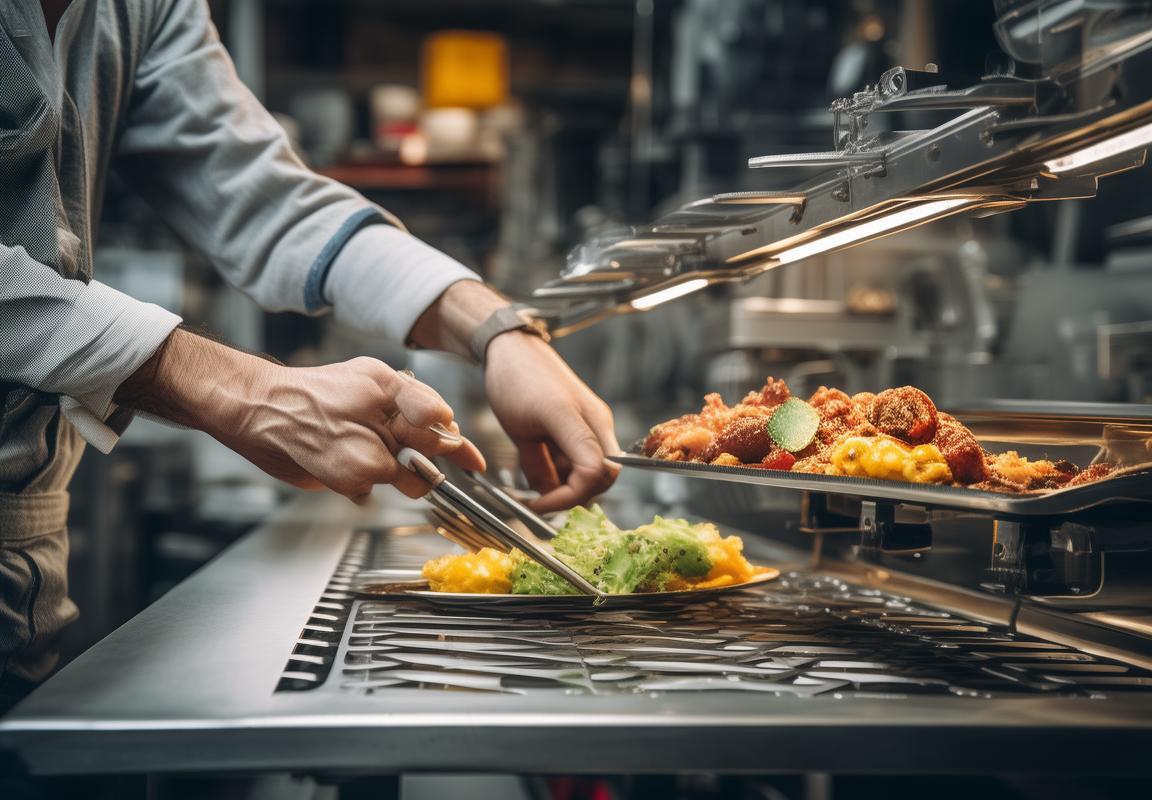
Key Considerations When Selecting a Contact Grill OEM Partner
Navigating the complexities of the contact grill market, selecting the right Original Equipment Manufacturer (OEM) partner is a pivotal decision. Here are some critical factors to consider when choosing a contact grill OEM:
Understanding the OEM’s Product Range and Customization CapabilitiesAn OEM’s product range can vary greatly, from basic models to high-end, feature-rich grills. Assess whether the OEM offers a variety of options that align with your brand’s identity and target market. Additionally, consider their ability to customize designs, materials, and features to meet your specific needs.
Assessing Quality Control and Manufacturing StandardsThe quality of the contact grill is paramount to your brand’s reputation. Look for an OEM that adheres to stringent quality control measures and manufacturing standards. This includes certifications, such as ISO, which ensure that the OEM follows international best practices in production.
Evaluating Technical Support and After-Sales ServiceA reliable OEM should provide comprehensive technical support and after-sales service. This means having a responsive customer service team, readily available for any queries or issues that may arise during the product lifecycle. It’s also important to consider the OEM’s willingness to work with you to troubleshoot and resolve any problems that may come up.
Considering the OEM’s Production Capacity and Lead TimesThe production capacity of the OEM is crucial, especially if you have high sales expectations. Ensure that the OEM can meet your production demands without compromising on quality. Additionally, inquire about lead times to understand how quickly you can expect to receive your orders, which is particularly important for time-sensitive product launches.
Understanding the OEM’s Pricing Structure and Cost EfficiencyCost is a significant factor in any business decision. Analyze the OEM’s pricing structure to ensure it aligns with your budget and offers competitive pricing. Cost efficiency doesn’t just mean low prices; it also involves finding a balance between cost and quality, ensuring that your customers receive a high-value product.
Reviewing the OEM’s Experience and Industry ReputationThe experience and reputation of an OEM can speak volumes about their reliability and expertise. Look for an OEM with a proven track record in the contact grill industry. Check reviews, testimonials, and case studies to gauge their reputation among other businesses.
Assessing the OEM’s Intellectual Property and Design RightsWhen working with an OEM, it’s essential to understand the intellectual property rights. Ensure that the OEM respects your brand’s intellectual property and that you have clear agreements regarding design rights and ownership. This is crucial for maintaining your brand’s uniqueness in the market.
Considering the OEM’s Supply Chain and Sourcing PracticesThe stability and integrity of the OEM’s supply chain are vital for ensuring a consistent supply of high-quality components. Evaluate their sourcing practices to ensure they use reliable suppliers and that their production process is transparent and ethical.
Understanding the OEM’s Compliance with Regulatory StandardsCompliance with local and international regulations is non-negotiable. Verify that the OEM adheres to all relevant safety and environmental regulations. This not only protects your brand but also ensures that your customers can use the product with confidence.
Assessing the OEM’s Flexibility and AdaptabilityThe contact grill market is dynamic, with evolving consumer preferences and technological advancements. Choose an OEM that is flexible and adaptable, capable of evolving with market trends and incorporating new features into their products.
Reviewing the OEM’s Communication and Collaboration ApproachEffective communication is key to a successful partnership. Look for an OEM that values open and transparent communication, is responsive to your needs, and is willing to collaborate closely with your team to achieve shared goals.
Understanding the OEM’s Capacity for Innovation and R&DInnovation drives market success. An OEM with a strong Research and Development (R&D) team can help you stay ahead of the competition by introducing new features and technologies. Evaluate their commitment to innovation and their track record of bringing new products to market.
Assessing the OEM’s Logistics and Distribution NetworkThe efficiency of the OEM’s logistics and distribution network can impact your ability to deliver products to customers on time. Ensure that the OEM has a robust system in place for handling orders, shipping, and managing inventory.
Understanding the OEM’s Financial Stability and Business ViabilityBefore entering into a partnership, it’s important to assess the financial stability and business viability of the OEM. This includes reviewing their financial statements, credit ratings, and overall business health to ensure they are a reliable and sustainable partner.
By carefully considering these factors, you can select a contact grill OEM partner that aligns with your brand’s values, meets your quality standards, and supports your business objectives.
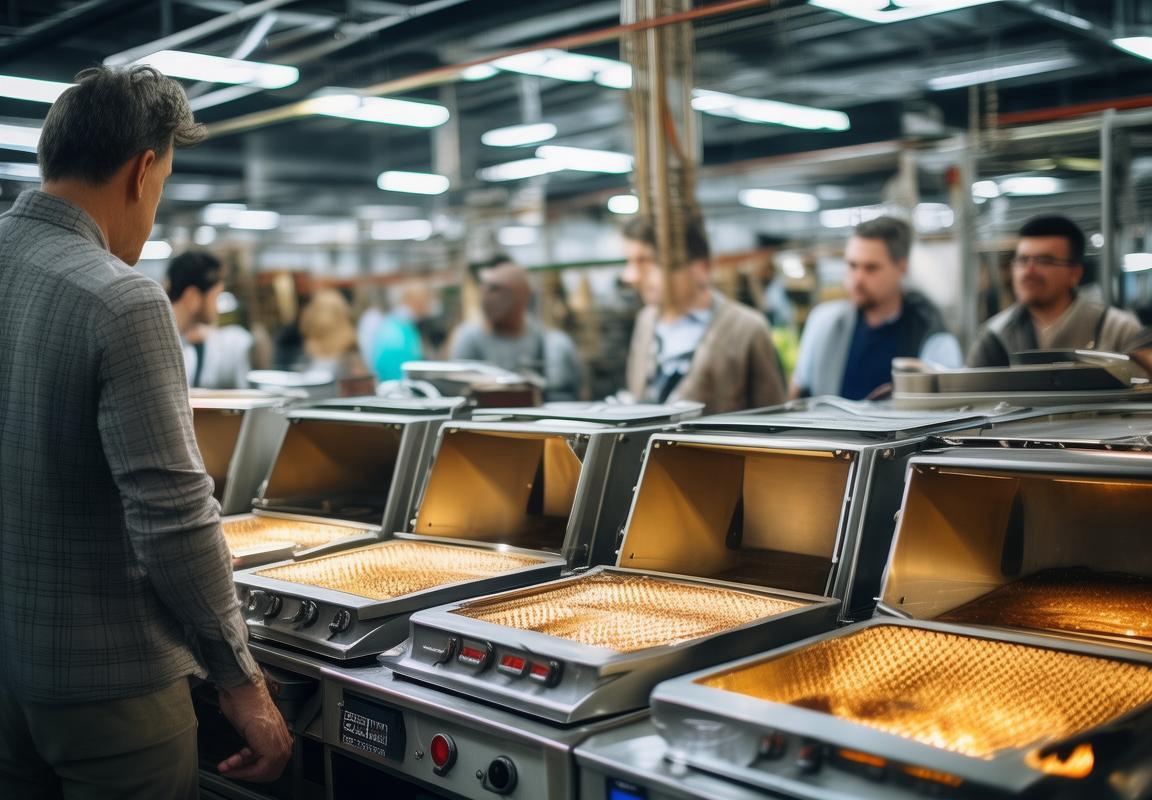
Case Studies: Successful Collaborations with Contact Grill OEMs
In the world of contact grill manufacturing, successful collaborations with Original Equipment Manufacturers (OEMs) can lead to groundbreaking products and market leadership. Let’s delve into a few case studies that showcase how these partnerships have paid off.
-
Brand X and GrillPro OEM: Streamlining ProductionBrand X, a well-known manufacturer of outdoor kitchen appliances, sought to expand its product line with a high-quality contact grill. After researching various OEMs, they partnered with GrillPro, a leading OEM in the industry. GrillPro’s expertise in grill design and manufacturing allowed Brand X to launch a new line of contact grills that were not only robust but also energy-efficient. The collaboration resulted in a streamlined production process, with GrillPro handling the manufacturing while Brand X focused on marketing and sales.
-
HealthYook and EcoGrill OEM: Innovation in MaterialsHealthYook, a company dedicated to producing health-conscious cooking appliances, needed a contact grill that would appeal to environmentally conscious consumers. They turned to EcoGrill OEM, known for its sustainable practices and innovative materials. The partnership led to the creation of a contact grill made from recycled materials, reducing the carbon footprint of the product. The grill also featured non-toxic coatings, making it a hit among eco-friendly consumers. The success of this collaboration can be attributed to the shared values between HealthYook and EcoGrill OEM, resulting in a product that met both market demand and ethical standards.
-
Barbecue Bliss and PrecisionGrill OEM: Tailored CustomizationBarbecue Bliss, a brand that specializes in custom outdoor grilling solutions, wanted to offer its customers a contact grill that could be customized to fit their specific needs. They partnered with PrecisionGrill OEM, which excels in custom engineering and manufacturing. The collaboration resulted in a line of contact grills with adjustable heat zones, variable cooking temperatures, and even a built-in smoking function. By leveraging PrecisionGrill’s engineering capabilities, Barbecue Bliss was able to create a product that set them apart from competitors and satisfied the diverse preferences of their customer base.
-
SizzleSmith and Heatwave Grill OEM: Rapid Prototyping and Market LaunchSizzleSmith, a startup aiming to disrupt the contact grill market with an affordable, compact grill, needed a fast and efficient manufacturing partner. They chose Heatwave Grill OEM, which specializes in rapid prototyping and short-run production. The partnership allowed SizzleSmith to bring their product to market quickly, with Heatwave Grill OEM handling the production of prototypes, testing, and the final product. This rapid development and launch strategy was crucial for SizzleSmith, enabling them to capture early market share and build a loyal customer base.
-
GrillGuru and GlobalGrill OEM: Expanding International ReachGrillGuru, a mid-sized grill manufacturer looking to expand into international markets, needed an OEM that could produce high-quality contact grills in bulk. They partnered with GlobalGrill OEM, which has a global supply chain and experience in exporting to various countries. The collaboration resulted in a successful launch of GrillGuru’s contact grills in Europe and Asia, with GlobalGrill OEM managing logistics, compliance, and quality control. This partnership allowed GrillGuru to enter new markets and grow its brand internationally.
-
FlameFire and HeatGuard OEM: Safety and Quality AssuranceFlameFire, a brand committed to safety and quality in outdoor grilling, required an OEM partner that could meet their stringent safety standards. They chose HeatGuard OEM, which is renowned for its safety-focused designs and manufacturing processes. The partnership resulted in a contact grill that not only exceeded industry safety standards but also received positive feedback from customers. HeatGuard’s expertise in material selection and construction ensured that FlameFire could offer a product that customers could trust.
-
FireFusion and FusionGrill OEM: Combining TechnologiesFireFusion, a company that wanted to integrate contact grill technology with advanced cooking technologies like infrared and convection, partnered with FusionGrill OEM. This collaboration allowed FireFusion to create a hybrid grill that offered the precision of contact grilling with the versatility of other cooking methods. FusionGrill’s technical know-how and willingness to experiment with new technologies made this innovative product a reality, setting FireFusion apart from competitors and appealing to a broad range of consumers.
These case studies highlight the importance of strategic partnerships with Contact Grill OEMs. From streamlining production to innovating materials and expanding market reach, these collaborations have proven to be the key to success in the contact grill industry. By leveraging the strengths and expertise of OEMs, manufacturers can bring high-quality, innovative products to market, meet consumer demands, and establish themselves as leaders in the industry.
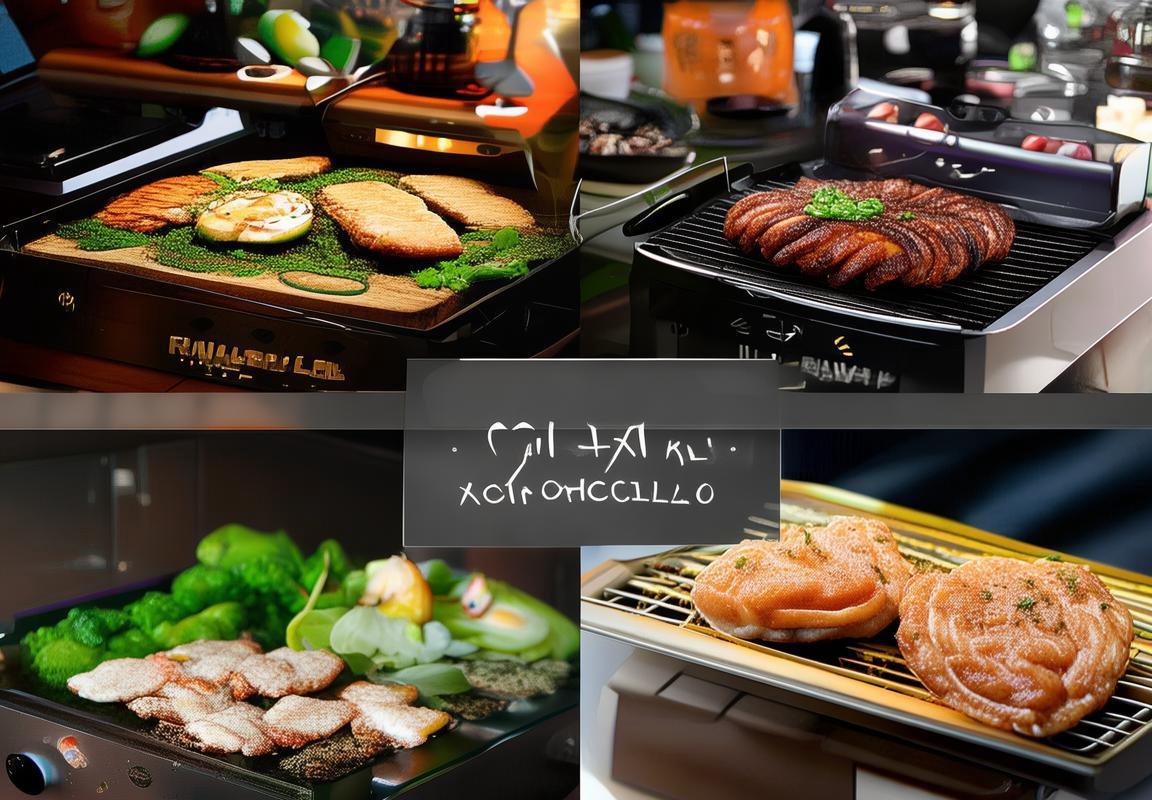
The Future of Contact Grill OEMs: Innovations and Trends
In the ever-evolving landscape of kitchen appliances, contact grill OEMs are at the forefront of innovation. These Original Equipment Manufacturers (OEMs) play a pivotal role in shaping the future of cooking technology. Here’s a glimpse into the potential innovations and trends that could redefine the contact grill market.
The integration of smart technology is a trend that’s gaining momentum. Contact grill OEMs are exploring ways to infuse their products with features like Bluetooth connectivity, allowing users to control their grills remotely via smartphones. This not only enhances convenience but also opens up possibilities for apps that provide cooking tips, temperature monitoring, and even social sharing of recipes.
Energy efficiency is another area where contact grill OEMs are making strides. As consumers become more environmentally conscious, there’s a growing demand for appliances that are not only functional but also eco-friendly. Innovations in heat retention and energy-saving modes are being developed to reduce power consumption without compromising on cooking performance.
The use of advanced materials is also a significant trend. Contact grill OEMs are experimenting with materials that offer better heat distribution and durability. For instance, the adoption of ceramic or stone surfaces for grilling plates not only provides a non-stick surface but also imparts a unique flavor to the food. These materials are also more resistant to wear and tear, ensuring a longer lifespan for the grill.
Customization is becoming a key factor in the contact grill market. OEMs are recognizing that consumers have varied preferences and needs. As such, there’s a push towards modular designs that allow users to swap out parts like cooking surfaces or accessories to suit their specific cooking styles or dietary restrictions.
Health and safety are at the forefront of new product developments. Contact grill OEMs are focusing on features that make their products safer to use and more hygienic. This includes anti-bacterial surfaces, automatic shut-off functions to prevent overheating, and easy-to-clean designs that minimize the risk of food contamination.
The rise of health-conscious eating habits has also influenced the direction of contact grill innovation. OEMs are creating models that facilitate healthier cooking methods, such as grilling instead of frying, which can reduce the fat content in meals. Features like adjustable heat settings and temperature probes are being added to ensure that food is cooked to the perfect degree without the need for excessive oil or butter.
Sustainability is a trend that’s not just about the materials used but also about the lifecycle of the product. Contact grill OEMs are looking into how they can design products that are easier to recycle or are made from recycled materials. This not only helps the environment but also appeals to consumers who are increasingly looking for brands that take sustainability seriously.
The Internet of Things (IoT) is another innovation that’s poised to impact the contact grill market. As appliances become more interconnected, contact grills could soon offer users the ability to integrate them with other smart kitchen devices. Imagine syncing your grill with your refrigerator to automatically adjust cooking times based on the freshness of the ingredients.
Lastly, the trend towards global flavors is also influencing the direction of contact grill innovation. OEMs are looking to incorporate features that cater to diverse culinary traditions, offering a variety of pre-programmed settings for different types of grilling styles found around the world.
In conclusion, the future of contact grill OEMs is bright, with a focus on technology, sustainability, and customization. As consumers continue to seek out innovative cooking solutions, these OEMs are at the cutting edge, driving the industry forward with a blend of smart features, health benefits, and environmental responsibility.
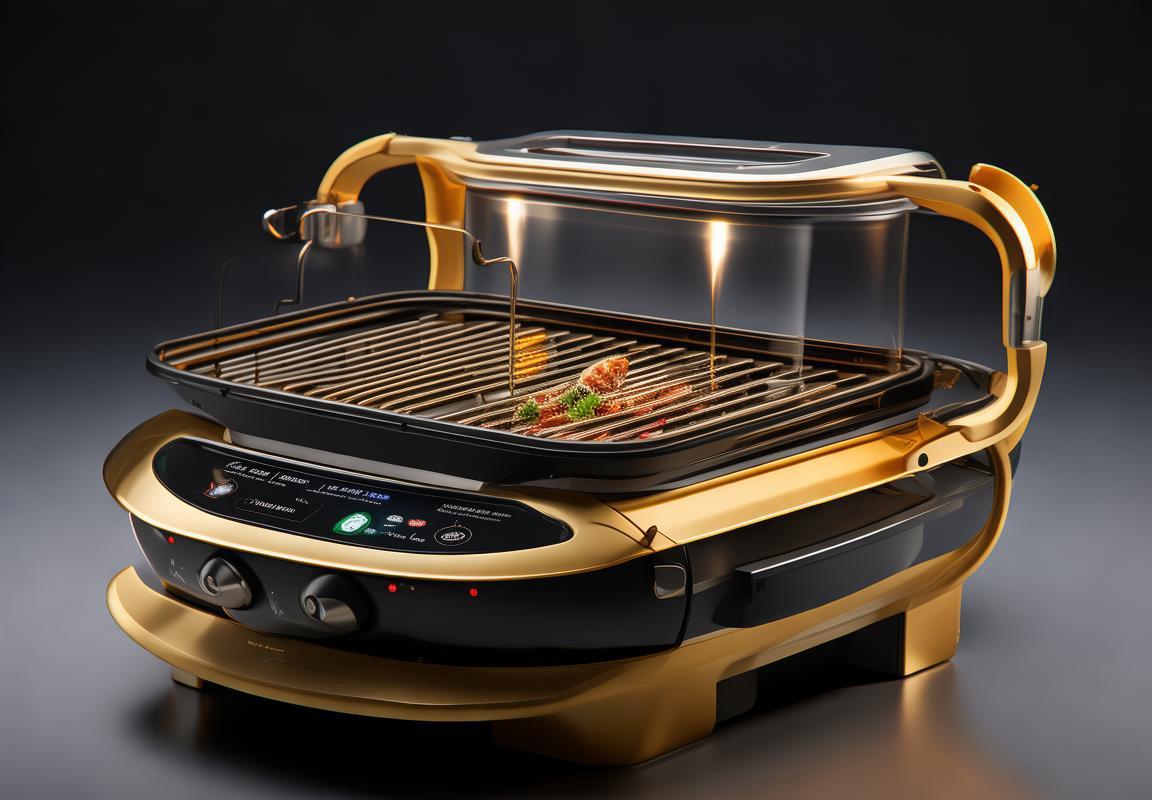
Conclusion: Why Contact Grill OEMs Are a Key Player in the Market
Partnering with a Contact Grill OEM can be a transformative step for any brand looking to enter or expand within the competitive market of outdoor cooking appliances. The process involves several critical stages, each with its own nuances and considerations. Understanding these stages can help businesses forge a successful and rewarding partnership.
Navigating the Selection Process: When considering a Contact Grill OEM, the initial step is to clearly define your business goals and requirements. This involves assessing the type of grill you want to produce, the target market, and the quality standards you aim to maintain. With these factors in mind, the search for the right OEM partner begins.
Understanding OEM Capabilities: It’s essential to research potential OEMs thoroughly. Look into their expertise in design, manufacturing, and quality control. Assess their ability to handle custom orders and their capacity to scale production based on demand. Visiting factories, reviewing case studies, and speaking with references can provide insights into an OEM’s capabilities and how they align with your brand’s vision.
Negotiating Terms: Once a suitable OEM is identified, the negotiation process begins. This phase involves discussing and finalizing key terms such as pricing, delivery schedules, intellectual property rights, and any exclusivity clauses. Clear and transparent communication is crucial to ensure both parties understand their obligations and the expectations of the partnership.
Quality Control and Standards: An OEM’s commitment to quality is paramount. It’s important to establish quality control measures that both parties agree upon, including the use of high-quality materials, adherence to safety regulations, and ongoing inspection processes. Regular audits and updates on production quality should be part of the partnership agreement.
Customization and Branding: One of the strengths of partnering with an OEM is the ability to customize products to fit your brand identity. Discuss the details of branding, including the placement of logos, the use of specific colors, and the overall design aesthetic that will resonate with your customers. Customization can extend beyond the grill itself, to packaging, user manuals, and marketing materials.
Supply Chain Management: A reliable OEM should have a robust supply chain management system. This includes efficient logistics, inventory control, and the ability to manage risks such as component shortages or transportation delays. Understanding the OEM’s supply chain can help you anticipate potential issues and work together to find solutions.
Intellectual Property Protection: Protecting intellectual property is vital, especially in a competitive market. Ensure that the OEM understands and respects your brand’s intellectual property rights, including patents, trademarks, and trade secrets. Clarity on how these assets will be protected and managed throughout the partnership is critical.
Performance Metrics and Reporting: Establishing clear performance metrics is essential for monitoring the success of the partnership. These metrics should cover production output, quality standards, delivery timelines, and any other agreed-upon goals. Regular reporting and reviews will help both parties stay on track and address any deviations promptly.
Adaptability and Long-Term Vision: The contact grill industry is subject to trends and consumer preferences that can change rapidly. An OEM partner that is adaptable and shares a long-term vision for the brand can be a valuable asset. Discuss the OEM’s willingness to innovate, their approach to market trends, and their strategic planning for the future.
Communication and Relationship Building: Throughout the partnership, maintaining open and honest communication is key. Regular meetings, updates, and feedback sessions help build a strong relationship between your brand and the OEM. This relationship can lead to a more collaborative and responsive partnership, capable of navigating challenges and seizing opportunities together.